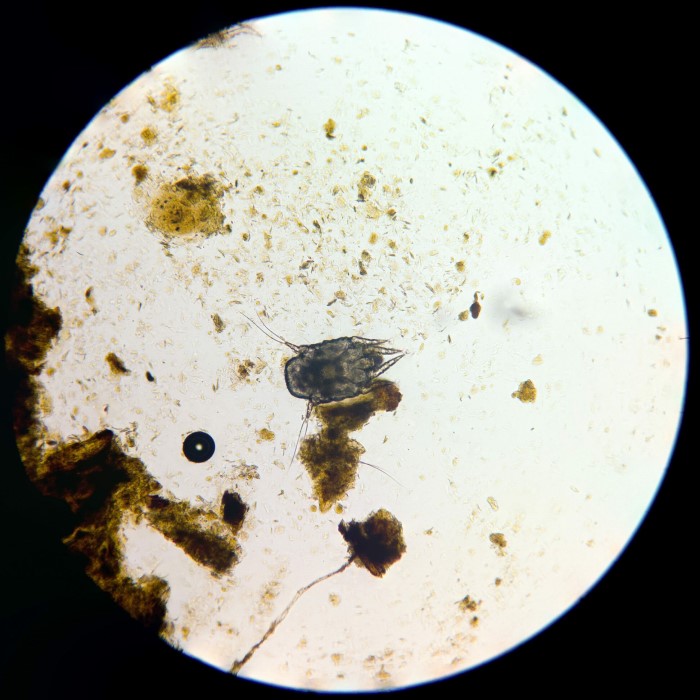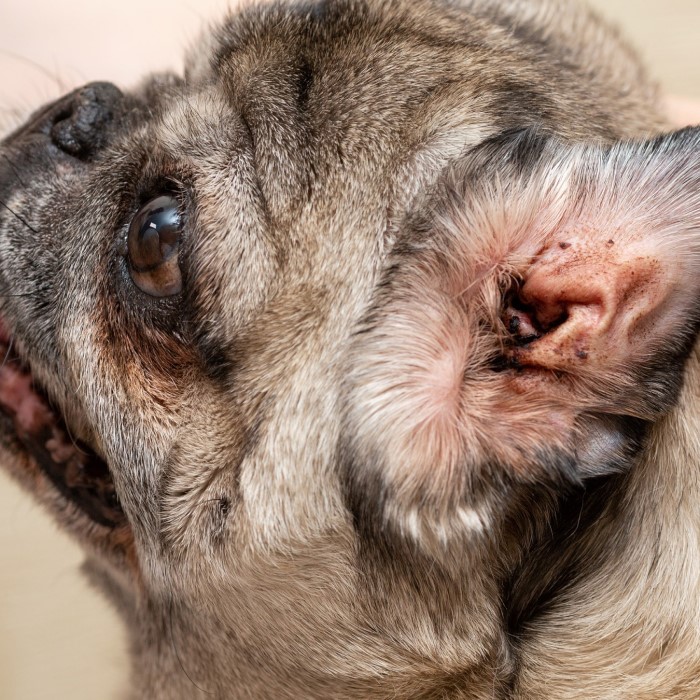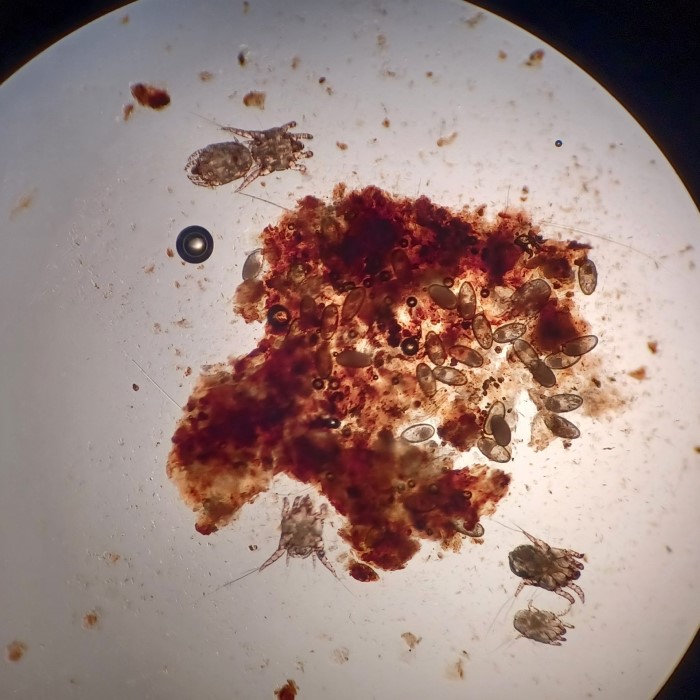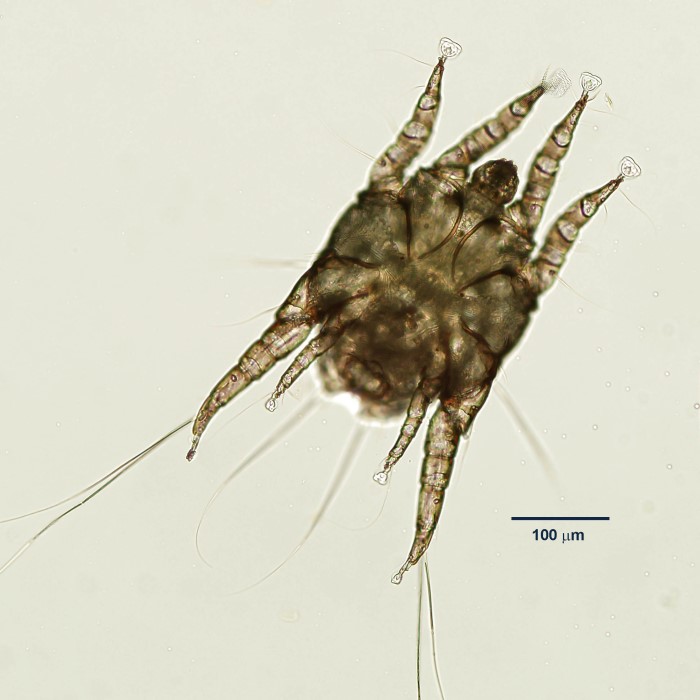Introduction to Dog Ear Mites
Dog ear mites are tiny parasites that can cause discomfort and health issues in our canine companions. When examined under a microscope, these mites reveal intricate details that help us understand their anatomy and behavior. This article delves into the dog ear mites under microscope, exploring their characteristics, the symptoms they cause, and the treatments available for affected pets. By understanding dog ear mites, pet owners can ensure their furry friends remain healthy and happy.
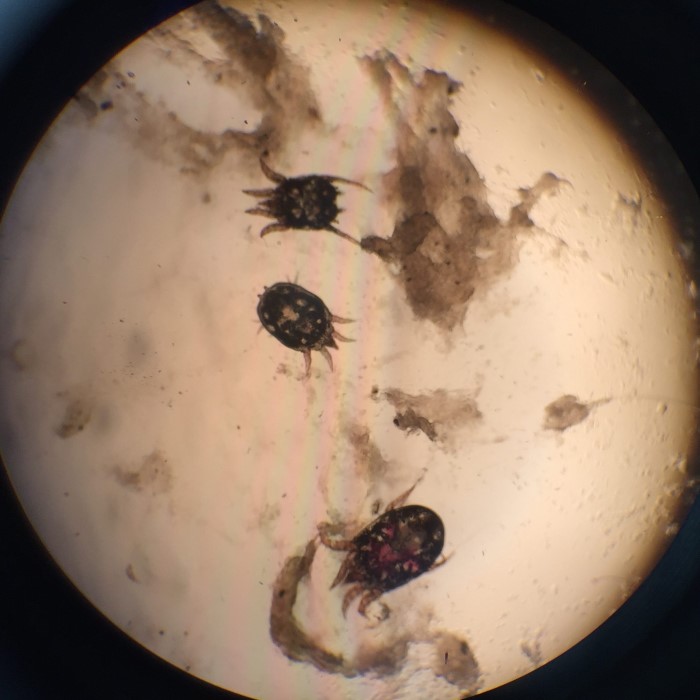
What are Dog Ear Mites?
Dog ear mites, scientifically known as ‘Otodectes cynotis’, are tiny arachnids. They feed on the oils and wax in your pet’s ear canal. These mites are highly contagious among animals and thrive in warm, moist environments.
How do Dogs Get Ear Mites?
Transmission mostly occurs through direct contact with an infected animal. This contact can be with another dog, or even cats and ferrets. Puppies are especially susceptible to mite infestations. Shared bedding or grooming tools may also spread ear mites.
Recognizing the presence of dog ear mites under a microscope is vital in diagnosis. Once identified, you can then proceed to explore treatment options to keep your furry friend happy and healthy.
Signs and Symptoms of Ear Mite Infestation
Recognizing dog ear mites under a microscope is crucial. But before that, knowing the signs and symptoms can alert you to a problem. If your dog has ear mites, you’ll notice certain changes in their behavior and health.
Unusual Scratching and Head Shaking
If your dog constantly scratches its ears or shakes its head, it could be ear mites. This intense scratching can sometimes lead to wounds or infections in the ear area.
Brown or Black Ear Discharge
An ear mite infestation often results in a dark, coffee ground-like discharge from the ears. This is mite waste and can be a clear sign of their presence.
Inflammation and Redness
The ears may become red and inflamed due to irritation. The skin might also become flaky or crusty near the ear canal.
Odor from the Ears
A strong, unpleasant smell can emanate from your dog’s ears. This is due to infection set in from the mite activity.
Hearing Loss
In severe cases, the infestation may impact your dog’s hearing. This might be due to blockage or damage within the ear.
These symptoms are indicators that your dog may be suffering from an ear mite infestation. Prompt action can prevent more serious issues. A vet can examine dog ear mites under microscope for a definitive diagnosis.
The Science Behind Ear Mites: A Microscopic View
When you look at dog ear mites under a microscope, you unveil a hidden world. These mites are not visible to the naked eye. They are incredibly tiny but cause significant trouble for your pet. To understand the science behind these parasites, we’ll dive into their lifecycle and the environment they thrive in.
Ear mites are arachnids, similar to spiders and ticks. Their bodies are microscopic. They have eight legs when mature, but only six when they’re juveniles. They barely measure over a tenth of a millimeter in length when fully grown. This small size is what makes them so hard to detect without a microscope.
Mites have a simple life cycle. They hatch from eggs as larvae with six legs. After that, they develop into eight-legged nymphs. Eventually, they grow into adults. Throughout these stages, they feed on your dog’s ear wax and oils. This entire process happens inside the delicate environment of your pet’s ear canal. It is here that they breed and multiply.
Warmth and moisture in your dog’s ears create the perfect conditions for ear mites to survive. They prefer the stable temperature of your pet’s body. It allows them to live and reproduce. Without a microscope, what you might mistake for dirt or wax build-up could actually be a cluster of these pests.
Using a microscope, vets can spot mites as white or light-colored specks. They often move, which makes them easier to identify. Spotting them early is key. It helps prevent the spread to other pets and stops the cycle of infection and discomfort. In our next section, we will cover how to identify these mites step by step.
Step-by-Step Guide to Identifying Ear Mites
To confirm your dog has ear mites, a microscopic examination is standard. Use this guide to understand how vets identify these mites. It can also help you prepare if you’re inspecting at home.
Check for Symptoms First
Before you pull out a microscope, observe your dog. Look for the signs and symptoms we discussed. Intense scratching and head shaking are top clues. A foul odor or dark discharge are also key signs to notice.
Collect a Sample
Safely wipe the inside of your dog’s ear with a cotton swab. Aim to gather some of the dark, waxy discharge. This is where mites are likely to be found.
Prepare the Microscope Slide
Place the discharge onto a microscope slide. If you don’t have slides, a vet can do this for you. Applying a drop of mineral oil can make mites easier to see.
Examine Under the Microscope
Place the slide under the microscope. Start at a lower magnification. Look for tiny, white specks moving against a darker background. These are the mites.
Identification
What you’re looking for are tiny, white, moving specks with legs. Mites are sometimes mistaken for debris. Their movement is the giveaway. Remember, ear mites have eight legs as adults and six as juveniles.
Consult a Veterinarian
If you spot mites or are unsure, see a vet. They can confirm the presence of dog ear mites under a microscope. This ensures proper diagnosis and treatment.
Identifying dog ear mites under a microscope is a clear-cut process. But it requires patience and attention to detail. By following these steps, you can catch an infestation early. This allows for quicker treatment and relief for your pet.
Treatment Options for Eradicating Ear Mites
Once you have identified dog ear mites under a microscope, it’s time to treat them. Eradicating these pesky mites is critical for your dog’s comfort and health. Let’s explore the different treatment options available.
Cleaning the Ears
Start by cleaning your dog’s ears. Use a gentle ear cleaner to remove debris and discharge. This makes medicines more effective.
Topical Treatments
Apply topical medications prescribed by your vet. These often contain insecticides that kill mites.
Anti-Parasitic Drops
Your vet may recommend anti-parasitic ear drops. Administer them according to the vet’s instructions.
Oral Medications
In some cases, oral medications might be necessary. They target ear mites from within.
Injectable Treatments
For severe infestations, a vet might use an injectable medication. This offers a stronger approach.
Always consult a veterinarian before starting treatment. They can provide the safest and most effective medication for your dog’s specific case.
Preventative Measures for Dog Ear Mite Infestations
Prevention is key in the fight against dog ear mites. To avoid these critters taking hold in your pet’s ears, follow these proactive steps.
Regular Ear Checks
Make it a habit to check your dog’s ears regularly. Look for signs of wax build-up, discharge, or foul smell. These may hint at ear mites.
Clean Ears Often
Keep your dog’s ears clean. Use a vet-recommended cleaner and gently wipe the ear. Do not insert anything deep into the ear canal.
Maintain General Hygiene
Bathing your dog and cleaning its bedding can decrease mite risk. Also, wash shared pet items like toys and grooming tools.
Avoid Close Contact with Infected Animals
Keep your dog away from animals known to have mites. Mites spread easily through direct contact.
Use Preventative Treatments
Some products protect against ear mites. Ask your vet about drops or treatments that fit your dog’s needs.
Annual Vet Visits
Take your dog for yearly check-ups. Vets can spot early signs of ear mites under a microscope before you notice symptoms at home.
By taking these steps, you can lower the chances of dog ear mites disturbing your pet. It’s all about staying vigilant and maintaining good ear health. Ear mites under microscope review is a smart move only when prevention falls short.
Understanding the Vet Examination Process
When dealing with dog ear mites, understanding the vet examination is critical. Here’s what happens during the process.
Initial Consultation
During the initial visit, your vet will discuss your dog’s symptoms. This helps to determine if a microscopic examination is required.
Visual Examination
The vet will visually inspect the ear. They’re looking for signs such as redness, discharge, or odor.
Microscopic Analysis
A sample from your dog’s ear will be placed under a microscope. The vet looks for the characteristic white specks that indicate mites.
Confirmation
If mites are spotted, the vet will confirm an infestation. They will discuss the next steps.
Treatment Plan
Your vet will craft a treatment strategy. This will include medication and cleaning instructions.
Follow-Up Visits
To ensure the mites are gone, follow-up visits are scheduled. These check the progress of the treatments.
By understanding the vet’s examination process for dog ear mites under a microscope, owners can be better prepared for the appointment and follow-up care.
FAQ About Dog Ear Mites
When facing dog ear mites, owners often have many questions. Here are some common FAQs about these pests.
What Exactly Are Dog Ear Mites?
Dog ear mites are small parasites that live in your dog’s ears. They feed on ear wax and oils.
How Can I Tell if My Dog Has Ear Mites?
Look for signs like excessive scratching, head shaking, and dark ear discharge. A vet can confirm.
Are Ear Mites Visible Without a Microscope?
No, they are too small. You need a microscope to see these tiny white specks clearly.
Can Ear Mites Affect Humans?
Rarely. They prefer animals’ ears. Still, maintain hygiene after handling infected pets.
How Long Does It Take to Treat Ear Mites?
Treatment length varies. It depends on the infestation severity and treatment type. Ask your vet.
Can Ear Mites Go Away on Their Own?
Unlikely. Without treatment, they can cause more issues. It’s best to see a vet.
What Can I Do to Prevent Ear Mites?
Keep your dog clean. Check their ears often. Avoid contact with infected animals. Use preventative treatments.
Should I Clean My Dog’s Ears Before Visiting the Vet?
- Importance of Cleaning:
- Cleaning your dog’s ears before a vet visit can be beneficial. It helps the veterinarian get a clearer view of the ear canal and the overall condition of your dog’s ears during the examination.
- Gentle Cleaning Required:
- It’s essential to clean your dog’s ears gently to avoid causing any discomfort or injury. Be mindful of your dog’s sensitivity, as the ear area is delicate. Always approach the cleaning process with care.
- Use Recommended Cleaners:
- When cleaning your dog’s ears, it’s crucial to use a cleaner that is specifically recommended for canine use. Avoid using human products or homemade solutions, as they may contain ingredients harmful to dogs. Consult your veterinarian for their recommendations on safe and effective ear cleaning solutions.
- Check for Any Issues:
- While cleaning, take the opportunity to look for any unusual signs, such as excessive wax buildup, redness, swelling, or a foul odor. These indicators may suggest an underlying issue that should be addressed by the vet.
- Communicate with Your Vet:
- If you notice anything unusual during the cleaning process, be sure to communicate this to your veterinarian during your visit. This information can provide valuable context for their examination and diagnosis.
- Scheduled Vet Visit:
- If your dog is due for a vet visit, consider scheduling it in a timely manner after cleaning their ears. This way, the veterinarian can assess how effective your cleaning efforts were and provide any necessary further treatment.
By having answers to these FAQs about dog ear mites, you can be ready to protect your pet. Remember, a vet is the best person to diagnose and treat ear mites effectively.
Conclusion: Understanding and Managing Dog Ear Mites
In conclusion, examining dog ear mites under microscope reveals critical information about these tiny parasites. Understanding their anatomy, symptoms, diagnosis, and treatment options empowers pet owners to take action as needed.
Recognizing the signs of ear mite infestations is essential for maintaining your dog’s health. By being proactive in monitoring your pet’s ear health and seeking professional advice, you can ensure that your furry friend remains happy and comfortable. Through informed care, avoiding or effectively treating ear mites becomes easier, making summer outings with your dog a joy.
By staying alert and prioritizing your dog’s well-being, you can make sure they enjoy a healthy, mite-free life!
